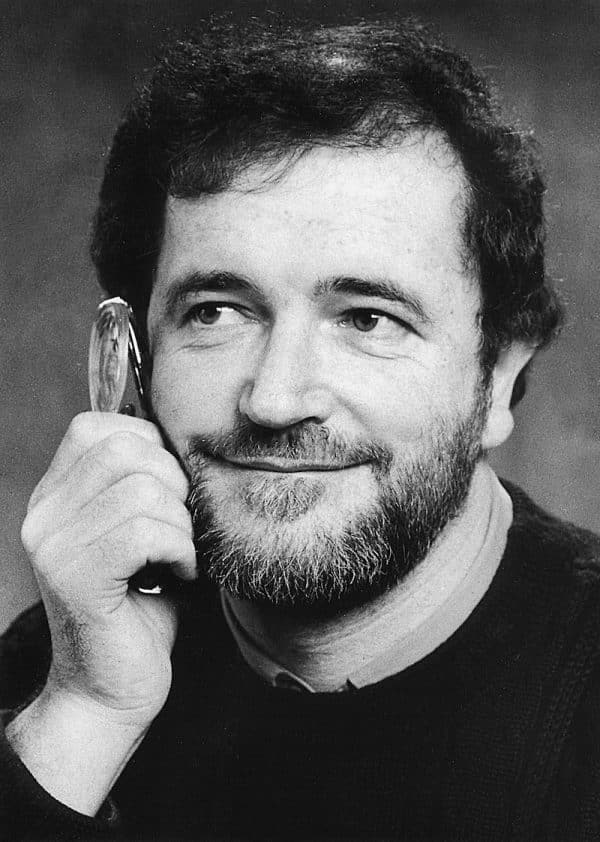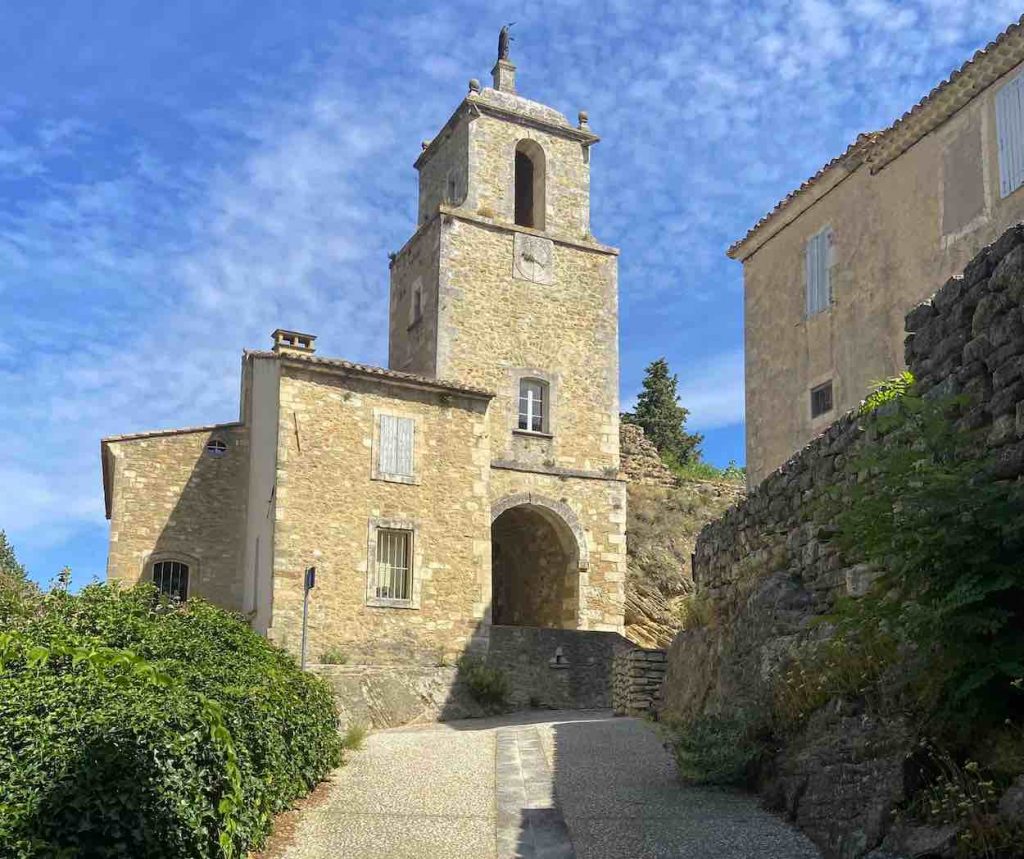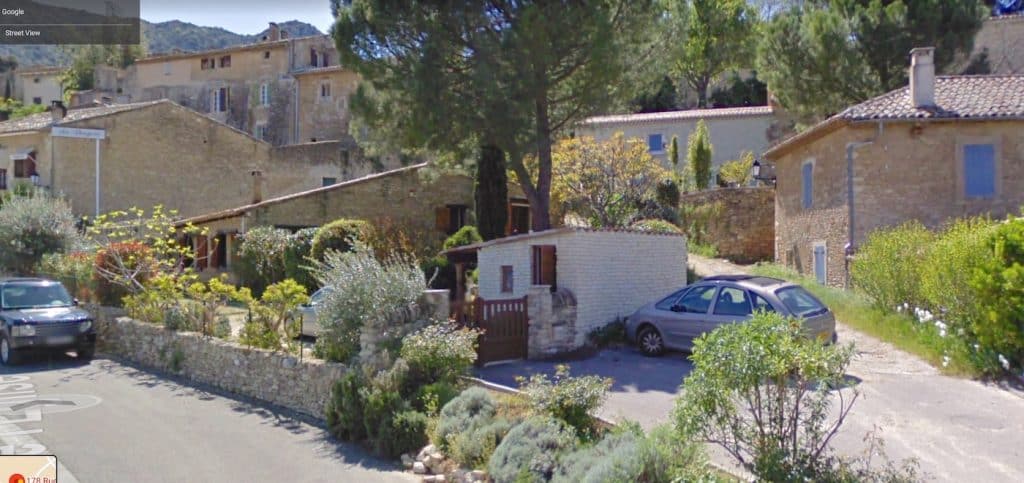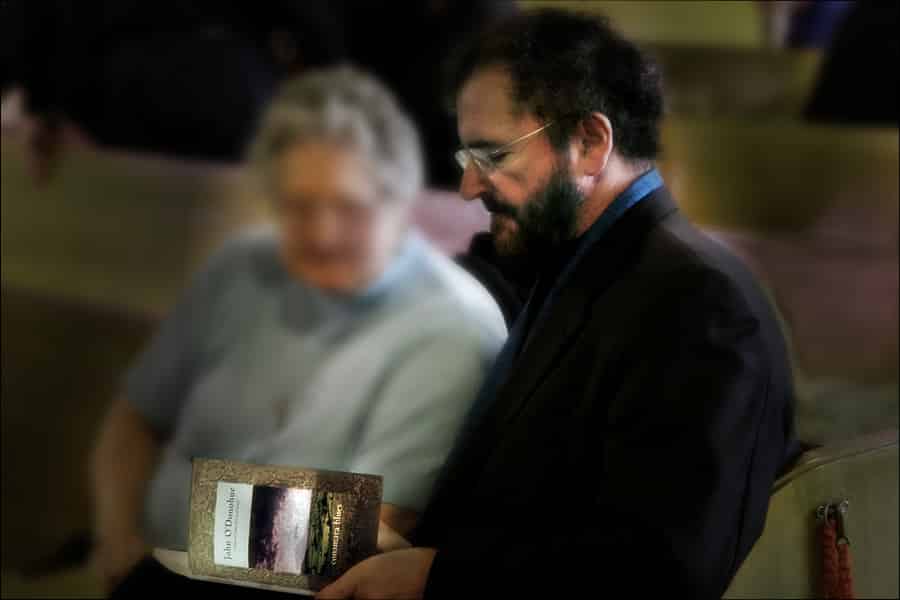This story / page is available in:
![]() German
German
Part 8 of the article series on the Irish philosopher, poet and priest John O’Donohue (1956 – 2008) reports on his late hapiness and the circumstances of his abrupt and early death.
Flashback: Ireland’s West. Connemara. The priest John O’Donohue had drifted far away from his church in the mid-90s and then gave up work as a Catholic priest. John had already written books in the early 90s, and his work Anam Cara, published in September 1997, eventually became an international bestseller. The man from the Burren was now in the international spotlight. He was in demand as a speaker, lecturer and master of ceremonies. Not a few now considered him their guru, who would show them the Celtic path to the light. In his private life, John himself had searched long and many ways for the love he described so eloquently and profoundly in his books.
On 2 November 2007, John O’Donohue advertised in the local paper under the Irish name Sean O Donnchu the planning application to extend his cottage in Connemara. Here in the lonely house at the end of the road in the remote village, John had lived all these years since saying goodbye to parsonages. In that autumn of 2007, he made plans: his old cottage was to become a modern family home. He wanted to double the living space from 123 square metres to 247 square metres with an extension to the south: with three bedrooms, living room, relaxation area, eat-in kitchen, large library, study, prayer room, with sauna, outdoor seating, and a balcony overlooking the They were joint plans:
John wanted to share the refurbished cottage with his new life partner Kristine Fleck. John and Kristine had met months earlier. Kristine, a German naturopath, worked as a homeopath in Oxford, England. The couple made their first public appearance together at the Greenbelt Festival in August 2007. John gave an engaging and pointedly church-critical speech at the Christian cultural festival near Cheltenham in southwest England. Pip Wilson, John’s American friend, first captured the newly in love couple in photographs.
Part 8 of the Ireland News series on John O’Donohue
- Click here for the overview: All articles about the life and work of John O’Donohue.
- Click here for the book list: The books of John O’Donohue.
“I was never celibate”: John had many female admirers and many a girlfriend
The priest and ex-priest had many female admirers and many a girlfriend. Abstinence was not a value for him. John once confided to a friend: “I was never celibate”. The love of his life however he met only shortly before the end of his life. Hundreds of obituaries paid tribute to John O’Donohue after his sudden death in January 2008 at the age of only 52. Out of the fog of tributes and eulogies stood out a true sentence written by close friend, Anglo-Irish poet David Whyte. John left behind, according to Whyte, besides family and friends . . .
„ . . . the woman to whom he had just committed his future and who had brought him a happiness he had sought all his life: Kristine Fleck.“
Friends like the Swiss couple Hans-Ruedi and Heidi Hebeisen and the Celtic priest Dara Molloy knew that John was fundamentally rethinking his life that autumn of 2007. He had reached a decisive turning point and was preparing for a different future. His new book Benedictus, published a few weeks before his death, was the outward sign. John obviously planned to withdraw from public life and disappear from the glare of the limelight. He wanted to escape the constant pressure and the permanent expectations of American publishers and his salvation-seeking followers. He wanted to retire to the quiet existence of a scholar and live with his new life partner in the seclusion of Connemara. To ensure that the loneliness of the rural Irish west would not become a trap for his German partner, John was already looking for potential friends for Kristine in the area.
Support our writing: YOUR DONATION is much appreciated.
[O’Donohue had never made a secret of his preference for the water of life, the firewater, as he called it; he liked to flirt with his whiskey consumption and about all-nighters spent drinking: “Whiskey happened last night . . . We drank a beautiful bottle of single malt that didn’t die without proper spiritual necessity,”¹ he liked to say the morning after. This is probably why there is a whiskey bottle and a hip flask on John’s grave in Fanore, left by fans, almost like on the Paris grave of Jim Morrison, another idol who died early in France.]
John wanted to live healthier. The long announced book on Meister Eckhart wanted to be written.
There was probably no post-mortem carried out on John’s body
In the Connemara village where John had lived since the 90s, he was last seen on Christmas Eve 2007. His neighbour Joe met him on the village street. The two exchanged a few words and good wishes before John drove off in his old BMW. He had decided at short notice to spend the New Year and his birthday in the south of France. John spent Christmas with his family in the Burren, but he cancelled other gettogethers with friends in the neighbourhood. Some friends think he flew to France quite spontaneously.
John O’Donohue travelled to the southeast of France, to the department of Vaucluse. There, in the sun-drenched landscape between the Alps and the Mediterranean, he wanted to spend the New Year and his birthday on New Year’s Day with his partner Kristine and meet her parents. They were staying in a house in the small town of Maubec, about 35 kilometres from Avignon. The holiday home in Provence belonged to Kristine’s parents and is still owned by the family today.
John’s life ended on the night of 3 to 4 January 2008, two days after his 52nd birthday, in a house in the old village of Maubec. He was with Kristine. It was a quick and sudden death, a doctor could not be found in time. Close friends later learned that John most likely died of a heart attack.
John died only a few kilometres from the place where the life of perhaps his most important teacher had also ended: until his death, O’Donohue had been working on a major book on Meister Eckhart’s theology. The German mystic Eckhart von Hochheim (1260 – 1328) had died 680 years earlier in Avignon, then the seat of the Pope. The parallels are surprising: Eckhart had been persecuted as a heretic by the Church and the later Pope Benedict XII (Benedictus XII). John’s book on Eckhart was never to appear, but he left us the book Benedictus as his last work during his lifetime.
For various reasons, many Irish families are very secretive and Irish farming families are absolutely secretive. They do not want private and family matters to become public. This secrecy and inconsistent communication in the days and weeks after John’s death led to speculation and rumours about the circumstances of his death. The official John O’Donohue website took refuge in the formula that John “died peacefully in his sleep”. The website gave the time of death as 4 January on one occasion, 3 January on another, and the night of 3 to 4 January in between.
The next day, 4 January, a French doctor formally diagnosed the death and wrote in the death certificate that the time of death was 4 January at 2 am. However, John’s closest friends insist that John died at 11 pm on 3 January, before going to sleep. Phone calls from France on the night of his death are said to prove this.
Enquiries in Maubec did not bring certainty: the two doctors from Maubec who were usually called in to determine the death in 2008, Dr Thieblemont and Dr Geindre-Baudin both say: “I can’t remember”. Robion funeral director Michel Goua, who collected the body and witnessed John’s death for the community, also has no memory of the dead man in Maubec: “With over 300 deaths a year, I can’t remember each one.” The two daily newspapers published in the region did not report a single line about the death of the prominent guest from Ireland. What is certain is that John’s body was immediately prepared for repatriation and was not examined in any detail.
With the help of knowledgeable relatives, the shocked family organised the transport of John’s dead body back to Ireland. From the airport the body was taken to Fermoyle in the Burren to the home of brother Pat, where the wake was held on Friday 11 January.
Adding to the speculation about the cause of death was the fact that John’s body was probably not autopsied at all. As far as is currently known, no post-mortem examination was carried out in either France or Ireland. A post-mortem examination apparently did not take place, although this was mandatory under Irish law to determine the cause in the case of a sudden death. Enquiries with the officially appointed coroners in County Clare, in Dublin and in the Coroners Court in the Capital came to the same conclusion: this death is not documented in the forensic medicine archives.
On 12 January 2008, John O’Donohue’s remains were buried in Fanore in the Burren on a cold, rainy and inhospitable Saturday. The exact cause of death may therefore forever remain a mystery and the exact circumstances of death are known to only one person: Kristine.
John and Kristine were planning to marry
I asked Kristine Fleck for information. She replied that she does not want to share her memories of her time with John O’Donohue with the public:
“My relationship with John was entirely personal. My memories of him and our time together are immensely precious to me. I hope you understand that they represent a precious part of my life that I don’t want to share with other people who are strangers to me.”
This is both to be understood and respected.
Kristine and her parents travelled to the funeral in the Burren on Ireland’s west coast. Kristine met John’s family for the first time. Around the funeral, John’s partner confided to several people that she and John were planning to live together in Connemara and to get married soon.
A close priest friend of John’s confirmed this: “John wanted to get married”. Because he could not lay down his priesthood according to the understanding of the Catholic Church, an ecclesiastical marriage would not have been possible. But a civil marriage or a private vow would have been.
I asked John’s old friend, the Celtic priest Dara Molloy, whether he should have married the couple. He replied in the negative. Dara had resigned as a Catholic priest in 1996 and left the Catholic Church. He remained a priest. To this day, the Celtic clergyman from the Aran Islands celebrates extra-church celebrations and rituals for spiritual people of all orientations. Dara replied:
“John and Kristine hadn’t known each other for long. John came out of many relationships. We hoped very much for John things would go well now. They were engaged, but there was no date set for the wedding to my understanding. In Irish terms this can be between six months and five years before you get married.”
At the end of 2011, almost four years after his passing and shortly before the death of his mother Josie, John O’Donohue’s flawed will from 2001 was declared invalid by an Irish court. The entire inheritance of more than two million Euros plus future royalties was awarded to his seriously ill mother Josie. John’s three siblings benefited preferentially from their brother’s inheritance after their mother’s death. John’s life partner Kristine Fleck was not included in the court ruling. John had not made a new will after 2001.
Kristine moved back to Germany from England a few years later. Today, she lives unrecognised with her partner in a large German city. In this city, 250 years ago, a great German philosopher had been born who had influenced John O’Donohue’s thinking like hardly anyone else.
Flashback: Here we were, in November 2018, standing in the graveyard just off the coast road between Doolin and Ballyvaughan. At the grave of the spiritual philosopher we revered. Eliane, the passionate Instagrammer by my side, wrote a short post on the very day of the cemetery visit with a photo of the grave and the mention “So sad: John died just two weeks before his wedding”. The Instagram post was online for a few hours when the request arrived: ” . . . I would appreciate it if you would please edit this immediately. John did not die two weeks before his wedding. If you would please drop all references, we would be grateful!” The administrator of the Literary Estate demanded tabula rasa. We deleted the passage. Several enquiries as to what exactly was wrong with the account came to nothing, simply remained unanswered.

John O’Donohue im Jahr 1999. Foto: dtv; privat
On John O’Donohue, writer, poet, priest
John O’Donohue (1956 – 2008), grew up on a farm in a limestone valley in the Burren, County Clare. The eldest of four siblings, he became a priest, later a writer, philosopher and poet, environmental activist, life teacher, speaker, mystic and humanist. With Anam Cara, The Four Elements (published and available in German by dtv), Eternal Echoes and Divine Beauty he wrote international bestsellers. He loved human existence in all its facets. His great theme was to live life to the fullest without fear. He considered unlived life to be the maximum transgression of being human. In books and lectures, John encouraged people to courageously live the life they wanted and would love. It was important, not only to dream one’s dreams but also to realise them and thus find one’s destiny – free from fear and from the heart.
O’Donohue was a free spirit who thought Celtic as well as Christian spirituality, the mysticism of Eckhart and the philosophy of Hegel. He saw us, the living, walking on the shore of the great sea of the invisible, the imagination creating the bridges from the visible to the invisible world. He understood the deep human longing for belonging in an increasingly meaningless material world and was convinced, that human beings can overcome the fear of death – because it is a progress, not an end. His headstone reads, “Their lives have changed not ended.”
I often think of this man who taught me a lot about life, the soul, Celtic spirituality, nature. I never met him, I read his books. How often I heard his words about the soulful landscape when I walked through the rocky bog. Felt his wisdom when I moved through the mountains, understood his deep unity with nature when I stood by the sea and looked west. On 1 January 2021, John O’Donohue would have turned 65, had he not died unexpectedly 13 years ago. I would have loved to have met him. In November 2018, I started researching John’s life. It began by chance at his grave in Fanore in County Clare. I am reporting on the results of this search here on Irlandnews.
The director of John O’Donohue’s literary estate, Ann Cahill, was right: it was not two weeks until the wedding. It would have been a few weeks or months more. But as it was, the American woman, who can only be reached via two email addresses and a web form for enquiries about John O’Donohue, sent me on a long journey – on a search for who John O’Donohue was, how he had lived and how he died.
At the end of this journey, in the summer of 2021, I visited people in Ireland’s west who were close to John and with whom he was good friends . . .
- Click here for the overview: All articles about the life and work of John O’Donohue.
- Click here for the book list: The books of John O’Donohue.
- Copyright: © Markus Bäuchle 2021. All rights reserved.
You can support our work with a donation
Notes and photo credits
- Many thanks to my friend Uwe Backhaus, who is familiar with the country and the French language, for his enduring and time-consuming co-research in France.
- Photos Maubec, France: Gerold Schumann, (2) (Merci bien, Gerold!); Google Street View 2011 (1)
- Photos of John O’Donohue: Hans-Ruedi Hebeisen (Many thanks, HRH!), except:
- Black and white portrait of John O’Donohue: dtv.
- Photos Burren and Fanore: Markus Bäuchle
- ¹ According to Brian Draper in The Church Times of 27 September 2007.
This story / page is available in:
![]() German
German









Thank you for this! Much appreciated. John is one of the most important teachers in my life.
Beautiful. Touching. Inspiring.
I learned about John from a speech by Caroline Myss.
Got intrigued. And voilà!
Found your article.
Thank you, Markus ❤️
Ps.
Greetings from Leszno, Poland 😘
Thank you! I am just learning of this man and his family’s tour to Ireland in September.
When I was 16 my parents and I traveled to Ireland to stay with family friends, the Bewleys. We stayed in their cottage which I think was in Connemara.
I was a troubled teenager in 1968 and I was enraptured by the sea? Bay? Everyday I would sit on boulders looking out to the water. Peat to heat our. Feet at night and freely grazing cows and donkeys also contributed to the magical experience.
I will read more that you have written about this man!
Thank you so much for a wonderful piece. John has shaped my own faith since my wife gave me one of his books as a present. I too have visited and prayed at his grave.
I look forward to more.
Thank you.
Thank you Markus for your historical inspection. It’s strange in a mystical manner, that reading over your insights I feel closer to the mysteries that gave to John, so much wisdom and took so much whole-hearted structure away, by what some could easily call bureaucratic theft. At least John demonstrated, lived, and dedicated a life to the value of being here as opposed to residing inside one’s logic.
.
Markus, So lovely and emotional. I have been reading your words as John O’Donohue’s gentle and clear voice is speaking his lilting Irish accent above my head in my little room inside my RV parked somewhere in Nature with the Sun having set into a gorgeous pink-orange Autumnal western sky and the Moon rising in the east. A heartfelt thanks to you, John and nature for this present moment gift.
Danke Markus, meine Seele ist inspiriert
Many thanks Markus. I’m very grateful for discovering John O’Odonohue’s work and contributing your research. It’s life changing for me.. I live in New Zealand.
Thanks, Markus Bäuchle, …
I just discovered Johns brilliant work of Anam Cara and the Four Elements just recently. I would have missed a huge part of relatedness and living in this lifetime, if I wouldn’t habe been enriched and deepend my relationsship to “all my relations” by his work.
In deep respect and honour
all my relations siegFried🔥🔥🔥
Thanks for this, Markus. John O’Donohue…what a guy.
Thank You very much for this piece ❤️
This is a well-written piece. Thank you for sharing it.
Amazing, you did such a great job. Thank you for all these information, it’s so hard to find any details on his life and death.
I´m glad you find it helpful, Anni. All the best, Markus
Thank you so very much for this write-up!
Thank you for reading, Viola. It was a pleasure do this research & there is more to come. Markus